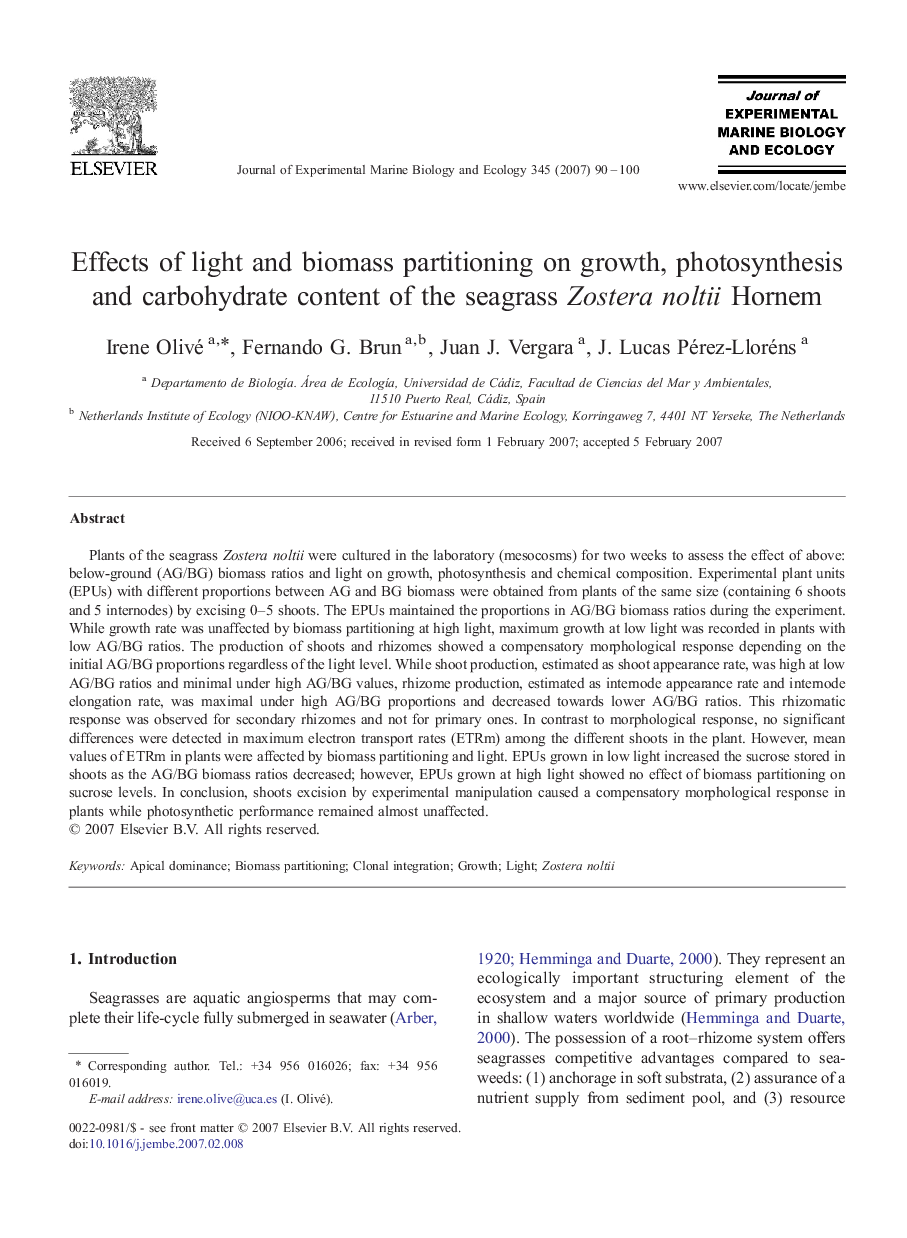| Article ID | Journal | Published Year | Pages | File Type |
|---|---|---|---|---|
| 4397821 | Journal of Experimental Marine Biology and Ecology | 2007 | 11 Pages |
Plants of the seagrass Zostera noltii were cultured in the laboratory (mesocosms) for two weeks to assess the effect of above:below-ground (AG/BG) biomass ratios and light on growth, photosynthesis and chemical composition. Experimental plant units (EPUs) with different proportions between AG and BG biomass were obtained from plants of the same size (containing 6 shoots and 5 internodes) by excising 0–5 shoots. The EPUs maintained the proportions in AG/BG biomass ratios during the experiment. While growth rate was unaffected by biomass partitioning at high light, maximum growth at low light was recorded in plants with low AG/BG ratios. The production of shoots and rhizomes showed a compensatory morphological response depending on the initial AG/BG proportions regardless of the light level. While shoot production, estimated as shoot appearance rate, was high at low AG/BG ratios and minimal under high AG/BG values, rhizome production, estimated as internode appearance rate and internode elongation rate, was maximal under high AG/BG proportions and decreased towards lower AG/BG ratios. This rhizomatic response was observed for secondary rhizomes and not for primary ones. In contrast to morphological response, no significant differences were detected in maximum electron transport rates (ETRm) among the different shoots in the plant. However, mean values of ETRm in plants were affected by biomass partitioning and light. EPUs grown in low light increased the sucrose stored in shoots as the AG/BG biomass ratios decreased; however, EPUs grown at high light showed no effect of biomass partitioning on sucrose levels. In conclusion, shoots excision by experimental manipulation caused a compensatory morphological response in plants while photosynthetic performance remained almost unaffected.
